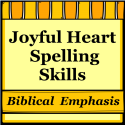Ten Red Apples
by Pat Hutchins
Focus Story: Ten Red Apples by Pat Hutchins
Companion Story: The Apple Pie Tree by Zoe Hall
Companion Poems: 'Apple Tree', 'Red Apples'
Day 1
Prior Knowledge:
Pass around a bag containing an apple. See if students can guess what is in the bag by feeling the object through the outside of the bag, by smell, etc. Once students have figured out what is in the bag, give each child their own apple and use their five senses to describe it. Show an incomplete chart that has an apple at the top and then one picture for each of the five senses. This is the Five Senses Apple Description Chart. Point to the first sense picture and have them use that sense to explore the apple. What words can they use to describe what they discover? Use interactive writing to write their descriptive words. For example, under the sense picture for sight you might write "I see…red, yellow, green, round, a stem." For the sense of touch, you may write "I feel….hard, smooth." Complete the descriptive writing for all of the senses – ending with taste and letting students enjoy eating their own apples! Explain to students that all this week they will be learning more about apples and reading both fiction and non fiction stories about apples.
Companion Poem:
Introduce the companion poem, 'Apple Tree'. Read the poem chart aloud. Reread with the students, showing them motions they can do to accompany each line. As time allows, make an apple eating sequence craft.
Apple Tree Poem Chart
Apple Eating Sequence Craft
Focus Story:
Introduce title, author, and cover for Ten Red Apples. Who do they see on the cover? Where might this story take place? What makes them think that? Take a picture walk, talking about the name and sound each animal makes, what they see the animals doing, the look on the farmer's face, introducing what the farmer repeatedly says, and making predictions as to which animal might come next in the story. Will there be enough apples for all of them? Stop at the page showing the farmer holding the last red apple. Ask students to make predictions about what might happen next. Read aloud for enjoyment and to see how story ends.
Day 2
Companion Poem:
Reread the companion poem, 'Apple Tree', enjoying the related motions. Reread again, pointing to each word on the chart. Review the Five Senses Apple Description Chart from yesterday. Show students another apple and ask them if they can tell you about the parts of the apple (stem, leaf, seeds, core, skin, pulp). Point to the outside portions of the apple first. Ask if they know what each part is called and why it is needed. Cut the apple open and, together, continue naming the parts and why each is important. Show a large apple chart. Use interactive writing to label each part of the apple on the chart.
Companion Story:
Introduce the title, author, and illustrator of the story The Apple Pie Tree. Show the cover. Have they ever seen or heard of an apple pie tree? Is it a real tree? What kind of tree do they think the author is really talking about? Why might she have called it an apple pie tree? Explain that this story will show us how an apple grows through the seasons and shows that it takes a really long time to make an apple pie! After reading, show pictures of how an apple grows. Have the students place the pictures in order so that they show the life of an apple leading up to the making of the apple pie. (from apple seed, apple seedling, apple tree, bud, apple blossom, little green apple, big red apple) If time allows make and eat individual apple pies today!
Focus Story:
Reread Ten Red Apples, letting students chime in on the animal sounds and repetitive portions. Encourage students to pretend that their 10 fingers are the apples and to put one finger down as each animal eats one apple.
Day 3
Companion Story:
Reread The Apple Pie Tree. Could you have called the tree something other than an apple pie tree? What else do you know of that is made from apples? Refer to the Parts of an Apple interactive writing chart. Which part(s) of the apple is used for eating and for making apple treats? With the students, make something that is made from apples. For example, you may want to make applesauce, apple crisp, caramel apples, or apple butter. Have students cut and glue pictures into the right order showing the steps for making your yummy apple treat.
Companion Poem:
Reread the companion poem, 'Apple Tree', enjoying the related motions. Reread again, pointing to each word on the chart. Have the students use wikki stix or a small apple shaped flyswatter to mask certain letters, sight words, and/or rhyming words on the poem chart.
Focus Story:
Similar to yesterday, reread Ten Red Apples, letting students chime in on the animal sounds and repetitive portions and counting down using their fingers. Make an interactive pocket chart with wording similar to the story. Let students read the 'Red Apples' pocket chart together, removing one apple each time and taking turns switching out the numerals and names.
Pictures to use with 'Red Apple' pocket chart
Day 4
Companion Poem:
Reread the companion poem, 'Apple Tree', enjoying the related motions. Read again a few times, allowing volunteers to point to each word on the chart.
Companion Story:
Reread The Apple Pie Tree. What seasons do students see throughout the story? Using four different pieces of paper, write the name of each season at the top of each. Have students look closely at the pictures in the book and use words to describe how the apple tree looks during each season. Draw what the students tell you they notice about the apple tree. How has the tree changed during the seasons? Make sure to draw students' attention to the bees and take time to discuss pollination. Allow students to make their own Apple Tree Through the Seasons craft.
Focus Story:
As in previous days, reread Ten Red Apples, letting students chime in on the animal sounds and repetitive portions and counting down using their fingers. Then, read again, asking students to listen carefully for any rhyming words that they hear. Make a list of the long e words (tree, me, fiddle-dee-dee, yippee). Reread the rhyming word list. Show pictures, including some that rhyme with 'tree' and others that do not. Have children sort the pictures into two groups. If time allows, reread the 'Red Apples' pocket chart together and take turns switching out the numerals and names.
Day 5
Companion Poem: Reread the companion poem, 'Apple Tree'.
Focus Story:
Have students act out the story today! Use a combination of the story Ten Red Apples and the 'Red Apples' pocket chart. Choose nine students to be the animals, one to be the farmer, and one to be the farmer's wife. When it is their turn, let each student character remove an apple from the pocket chart.
Companion Story:
Reread The Apple Pie Tree. Ask each student to share one thing that they have learned about apples this week. Review the Five Senses Apple Description Chart, Parts of an Apple interactive writing chart, the life of an apple sequence activity, and the Apple Tree Through the Seasons craft. Celebrate their learning with an Apple Tasting! Let students try small portions of different types of fresh apples, dried apples, apple juice, apple cider applesauce, apple butter, etc. Graph their favorite way to eat an apple.
Possible Cross Curricular Connections:
Art:
1) Stained Glass Apples
Materials Needed
Completed Apples Hanging in a Window
2) Apple prints
3) Ten Apples Up on Top craft to use with the story Ten Apples Up On Top by Dr. Seuss
4) Tissue paper apples
Math:
1) Apple Patterning
2) Apple Math Booklet – Have your students compare weights (things heavier and lighter than an apple), measuring circumference, favorite way to eat apple, sweet or sour taste, number of seeds inside, etc.!
Science:
Oxidation of an apple experiment - Cut an apple in half. Place one half in a bowl and cover the apple slices with lemon juice. Place the other half of the apple in a second bowl, but left exposed to the air. Have students make predictions about what will happen to both halves of the apple. Let set for at least half an hour. Let students examine both apple halves. How are they different? The one in the lemon juice should look the same, but the one left out should be drier and starting to turn brown. Why is it important to keep food refrigerated and/or covered up? What happens to bread, etc. when it is left uncovered?
Social Studies:
1) Legend of Johnny Appleseed
2) TLC Johnny Appleseed
3) Field trip to the Apple orchard
Literacy:
1) Apple Bingo- Have students practice letter recognition, sound correspndence, and home skills such as birthdate, telephone number etc. Make bingo cards and laminate. Let students use washable markers to write in the letters you are focusing on.
2) Matching: Apples (picture) to cores (Letter picture begins with), Apple and basket rhymes (apple pictures match to corresponding basket picture)
Related Read Aloud Stories/Poems:
Focus Story: Ten Red Apples by Pat Hutchins
Companion Story: The Apple Pie Tree by Zoe Hall
Companion Poems: 'Apple Tree', 'Red Apples'
Apple Farmer Annie by Monica Wellington
The Apple Pie That Papa Baked by Lauren Thompson and Jonathan Bean
Apples by Gail GibbonsRed Are the Apples by Marc Harshman
Apples, Apples, Apples by Nancy Elizabeth Wallace
Applesauce by Shirley Kurtz
Autumn Is for Apples by Michelle Knudsen
Dappled Apples by Jan Carr
From Blossom to Fruit (Apples) by Gail Saunders-Smith
How Do Apples Grow? By Betsy Maestro
How to Make an Apple Pie and See the World by Marjorie Priceman
I Am an Apple by Jean Marzollow
Little Apple: A Book of Thanks by Brigitte Weninger
Picking Apples (Apples) by Gail Saunders-Smith
The Seasons of Arnold's Apple Tree by Gail Gibbons
Ten Apples Up On Top by Leo Le Sieg (Dr. Seuss)
The Story of Johnny Appleseed by Aliki
Johnny Appleseed by Stephen Vincent Benet
Johnny Appleseed by Patricia Demuth
Related Internet Resources:
Apples of Gratitude - a free thankfulness notebook at our Joyful Heart Learning shop
Seasons of an Apple Tree Emergent Reader -from Making Learning Fun
Apple Printables - from ABC Teach
Apple Pickin' Time - ideas at The Virtual Vine
Apple Unit - from Terry's Treehouse
Apples - from Little Giraffes
Apple Unit - from the K Crew

























